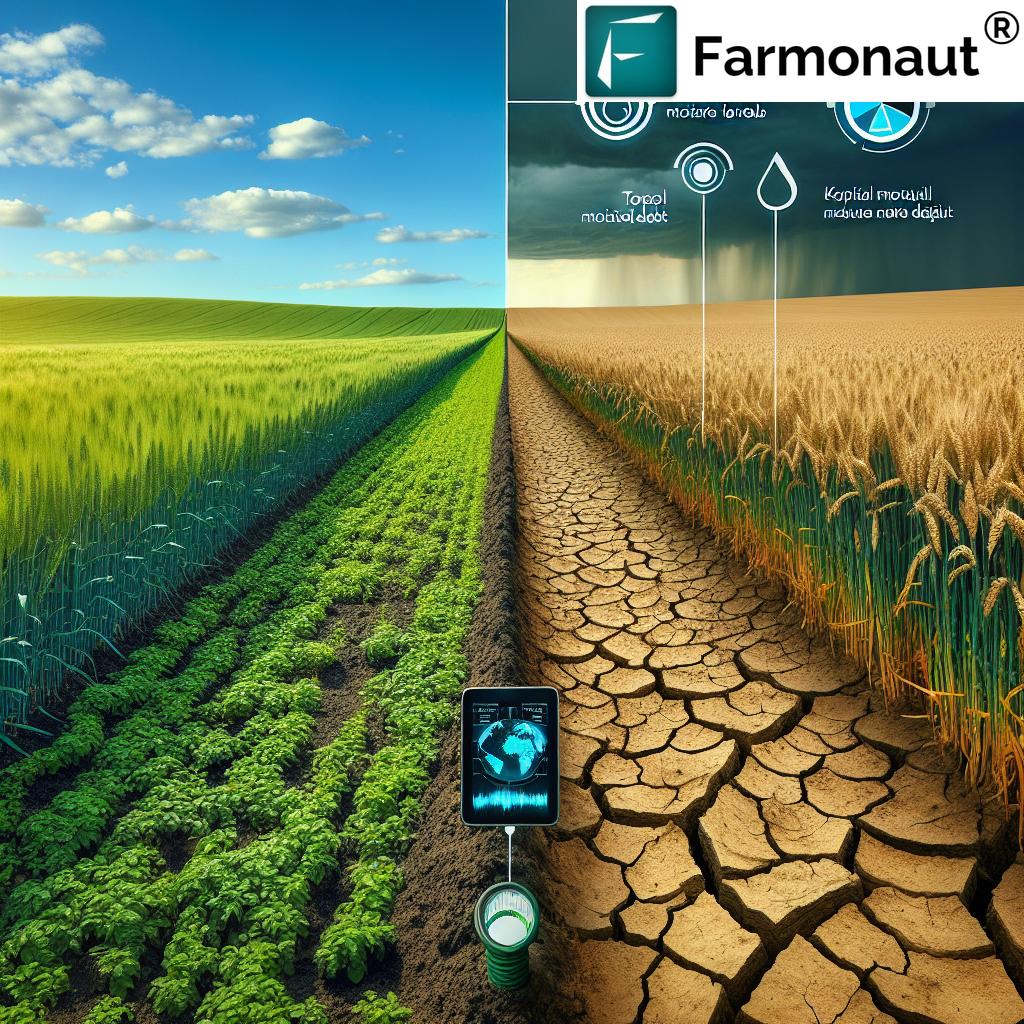Alarming Drought Impact: US Winter Wheat Conditions Plummet to Second-Lowest Rating in Decades

In a concerning development for the US agricultural sector, the latest USDA Crop Progress report reveals a stark decline in US winter wheat conditions, painting a grim picture for the upcoming harvest. The report, which provides the first assessment of the crop still being planted in major production regions for harvest in 2025, shows that well under half of US winter wheat is rated in good-to-excellent condition.
Unprecedented Decline in Winter Wheat Ratings
At a mere 38% good-to-excellent rating, the current condition of US winter wheat has fallen significantly below trade expectations of 47%. This rating marks the second-lowest for the date in records dating back to 1986, underscoring the severity of the situation. The US winter wheat drought impact is evident in these numbers, raising concerns about potential drought effects on wheat production in the coming year.
The USDA’s weekly Crop Progress report, which covers 18 states accounting for 89% of the 2023 winter wheat acreage, provides a detailed breakdown of the crop’s condition:
- 5% Excellent
- 33% Good
- 39% Fair
- 16% Poor
- 7% Very Poor
This stark contrast becomes even more apparent when compared to the previous year’s data. On October 30, 2023, the crop for harvest in 2024 was 84% planted and rated considerably better:
- 8% Excellent
- 39% Good
- 35% Fair
- 11% Poor
- 7% Very Poor
Winter Wheat Planting Progress and Regional Variations
The winter wheat planting progress 2024 has also been affected by the challenging conditions. As of October 27, the aggregate pace of US winter wheat seeding stood at 80% completed, lagging behind both the previous year and the 2019-23 average pace of 84% for the same date.
Looking at the primary hard red winter wheat production states, we see varying degrees of progress:
- Kansas: 87% planted (89% last year, 88% average)
- Oklahoma: 59% planted (74% last year, 81% average)
- Texas: 70% planted (72% last year, 75% average)
- Colorado: 99% planted (98% last year, 98% average)
- Nebraska: 99% planted (100% last year, 98% average)
- South Dakota: 95% planted (96% last year, 98% average)
- Montana: 88% planted (91% last year, 91% average)
For those interested in tracking these agricultural trends in real-time, consider using Farmonaut’s satellite-based monitoring solutions:

Drought’s Grip on Major Wheat-Producing Regions

The year-over-year decline in initial condition ratings is directly linked to widespread dryness across the Plains. The US Drought Monitor, as of October 22, paints a concerning picture for major wheat-producing states:
- Kansas: 70% in drought (2% in extreme drought)
- Texas: 53% in drought
- Colorado: 66% in drought
- Nebraska: 69% in drought
- South Dakota: 89% in drought
- Montana: 13% in drought
The drought’s impact extends beyond these percentages. Kansas, Nebraska, and South Dakota are almost entirely in moderate to severe drought, with pockets of abnormal dryness. Oklahoma faces a similar situation, with large areas in the northeast and south experiencing extreme drought.
Topsoil Moisture Shortage: A Critical Concern
Adequate topsoil moisture supplies are crucial for the emergence and initial development of the winter wheat crop. However, the latest USDA report highlights a severe topsoil moisture shortage wheat producers are grappling with:
- Kansas: 78% short-to-very-short
- Oklahoma: 84% short-to-very-short
- Texas: 92% short-to-very-short
- Colorado: 63% short-to-very-short
- Nebraska: 84% short-to-very-short
- South Dakota: 82% short-to-very-short
- Montana: 64% short-to-very-short
These alarming figures underscore the challenges farmers face in establishing healthy wheat crops this season.
For real-time insights into soil moisture and crop health, consider using Farmonaut’s API:
Explore Farmonaut’s Satellite API
Soft Red Winter Wheat: A Mixed Picture
While the situation in the Plains is dire, the Central states, home to the largest soft red winter wheat production area, present a somewhat mixed picture. Planting progress in these regions is close to or ahead of the typical pace:
- Missouri: 59% planted (61% last year, 55% average)
- Illinois: 85% planted (85% last year, 79% average)
- Indiana: 72% planted (6% last year, 74% average)
- Ohio: 88% planted (83% last year, 87% average)
- Michigan: 89% planted (65% last year, 79% average)
However, US wheat emergence rates in these states are varied:
- Missouri: 26% emerged (30% last year, 31% average)
- Illinois: 55% emerged (55% last year, 48% average)
- Indiana: 40% emerged (36% last year, 43% average)
- Ohio: 52% emerged (50% last year, 59% average)
- Michigan: 65% emerged (54% last year, 60% average)
Winter Wheat Good-to-Excellent Rating Decline in Central States
The winter wheat good-to-excellent rating decline is not limited to the Plains. Central states are also experiencing lower ratings compared to previous years:
- Missouri: 55% good-to-excellent
- Illinois: 51% good-to-excellent
- Indiana: 67% good-to-excellent
- Ohio: 71% good-to-excellent
- Michigan: 61% good-to-excellent
While these ratings are generally better than those in the Plains, they still reflect the challenging conditions faced by wheat farmers across the country.
Implications and Future Outlook
The current state of US winter wheat conditions raises significant concerns about the potential yield and quality of the 2025 harvest. The widespread drought and topsoil moisture deficits pose substantial risks to crop establishment and early growth stages.
Farmers and agricultural stakeholders will need to closely monitor weather patterns and consider adaptive strategies to mitigate the impact of these challenging conditions. This may include adjusting planting dates, selecting drought-resistant varieties, and implementing water conservation techniques where possible.
As the growing season progresses, the agricultural community will be watching closely for any improvements in moisture conditions that could help alleviate the current stress on the winter wheat crop.
For those looking to stay ahead of these agricultural challenges, Farmonaut offers mobile apps for on-the-go crop monitoring:
Download Farmonaut’s Mobile Apps:


In conclusion, the alarming drought impact on US winter wheat conditions, as reflected in the second-lowest rating in decades, presents a significant challenge for the agricultural sector. As we move forward, continued monitoring and adaptive management strategies will be crucial in navigating these difficult conditions and ensuring food security in the coming years.













